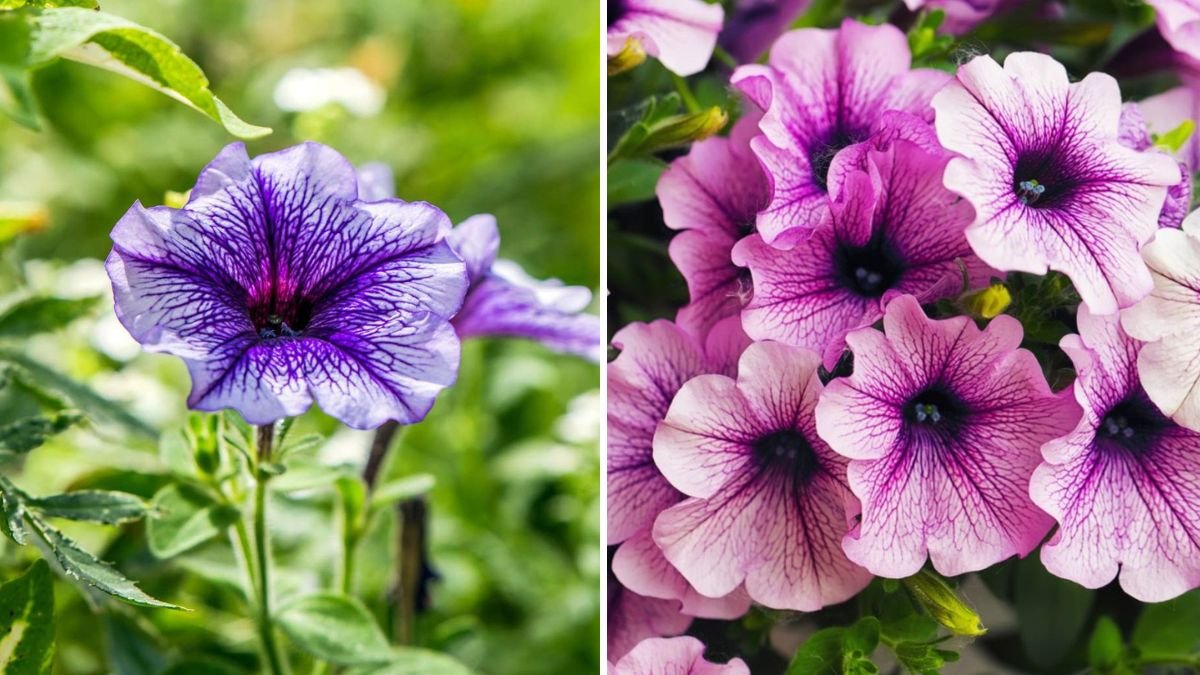Petunias are beloved garden favorites, renowned for their vibrant blooms, rich colors, and cascading growth habits. Whether planted in garden beds, hanging baskets, or window boxes, these flowers bring cheer and elegance to any space. However, petunias are heavy feeders, meaning they require consistent nutrients to maintain their bright colors and prolonged flowering season. Commercial fertilizers work, but many gardeners are now turning to homemade fertilizers, which are cost-effective, eco-friendly, and tailored to the plant’s needs.
This guide explores how to create the best homemade fertilizer for petunias and techniques to keep them blooming brightly all season.
1. Why Homemade Fertilizer Works for Petunias
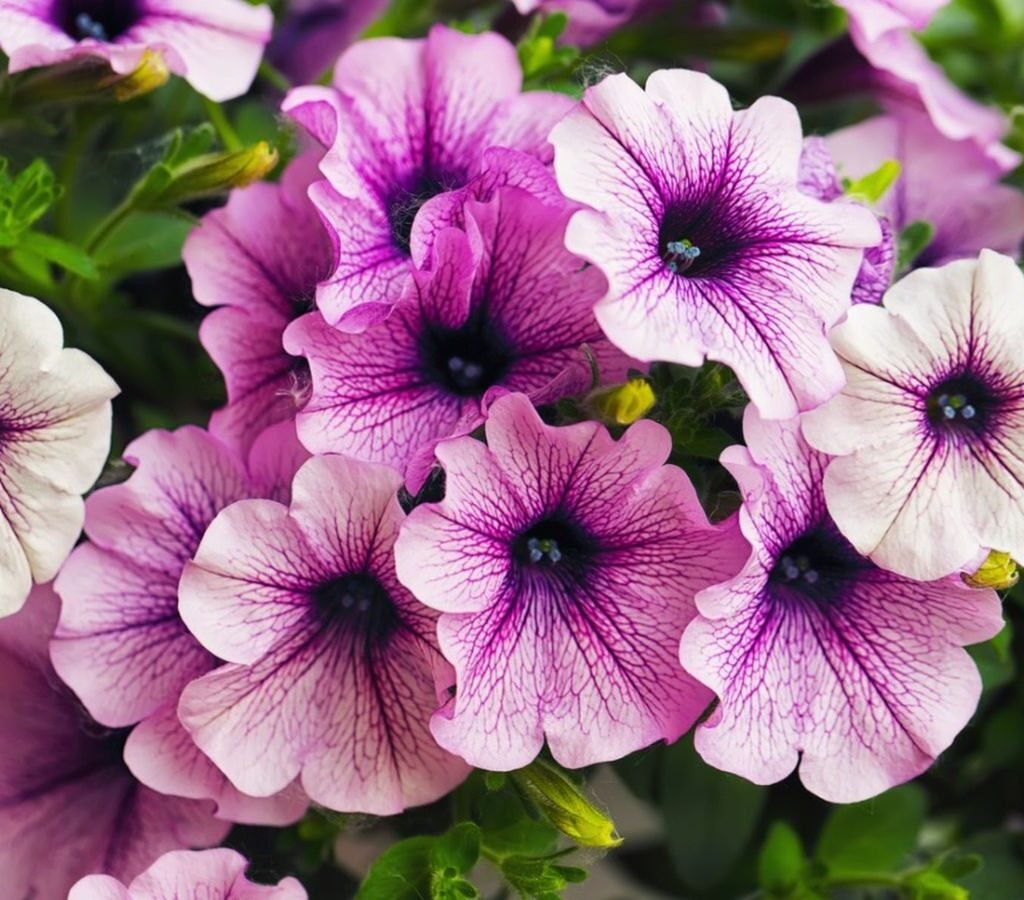
Petunias require a balance of nitrogen (N), phosphorus (P), and potassium (K):
- Nitrogen: Promotes strong foliage and overall growth.
- Phosphorus: Supports healthy root development and vibrant blooms.
- Potassium: Enhances flower size, color, and disease resistance.
Homemade fertilizers allow gardeners to control nutrient ratios, avoid synthetic chemicals, and recycle kitchen or garden waste into nutrient-rich compost that improves soil structure.
Tip: A balanced, nutrient-rich fertilizer ensures continuous blooms, stronger stems, and more vibrant petals.
2. Key Ingredients for Homemade Petunia Fertilizer
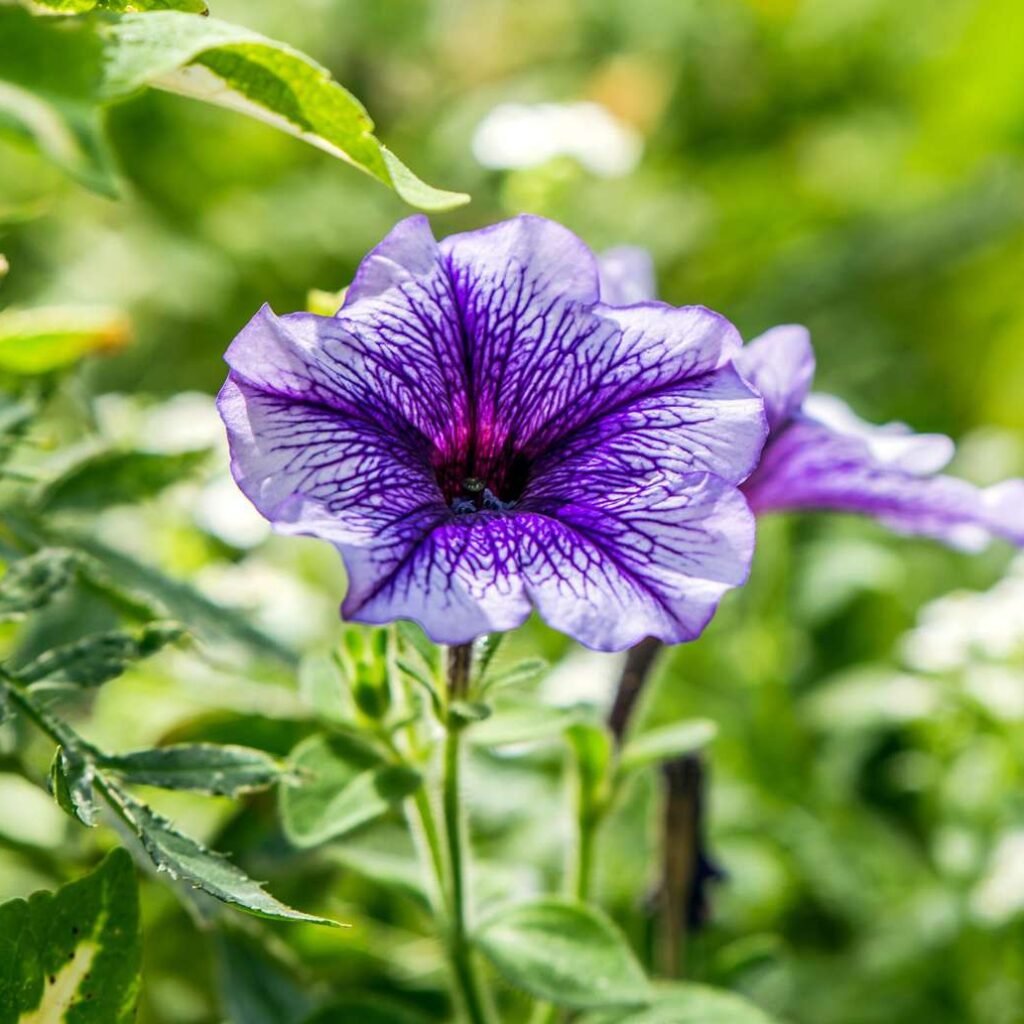
Several common household and garden items can be combined to create effective fertilizer for petunias.
A. Eggshells
- Rich in calcium, which strengthens cell walls and prevents blossom-end rot.
- Helps maintain slightly alkaline soil, beneficial for healthy growth.
How to Use: Crush eggshells finely and sprinkle around the base of plants, or blend into a powder and mix into the soil.
B. Coffee Grounds
- Contains nitrogen and organic matter, boosting foliage growth.
- Slightly acidic, which helps in maintaining soil pH favorable for certain petunia varieties.
How to Use: Mix fresh or used coffee grounds into the soil or compost. Avoid thick layers to prevent mold.
C. Banana Peels
- High in potassium and phosphorus, promoting large, vibrant blooms.
- Provides essential micronutrients like magnesium for chlorophyll production.
How to Use: Chop peels and bury them near the base of the plant or blend into a liquid fertilizer.
D. Vegetable Scraps and Compost
- Adds organic matter and a variety of nutrients.
- Improves soil structure, drainage, and moisture retention, all essential for healthy petunias.
How to Use: Add vegetable scraps to a compost bin, then mix the finished compost into garden beds or containers.
E. Epsom Salt
- Supplies magnesium to enhance flower color and overall plant health.
- Prevents yellowing leaves caused by magnesium deficiency.
How to Use: Dissolve 1 tablespoon in a gallon of water and apply as a foliar spray or soil drench every 3–4 weeks.
Tip: Combining these ingredients creates a balanced, all-natural fertilizer that addresses both growth and bloom quality.
3. How to Make Liquid Homemade Fertilizer for Petunias
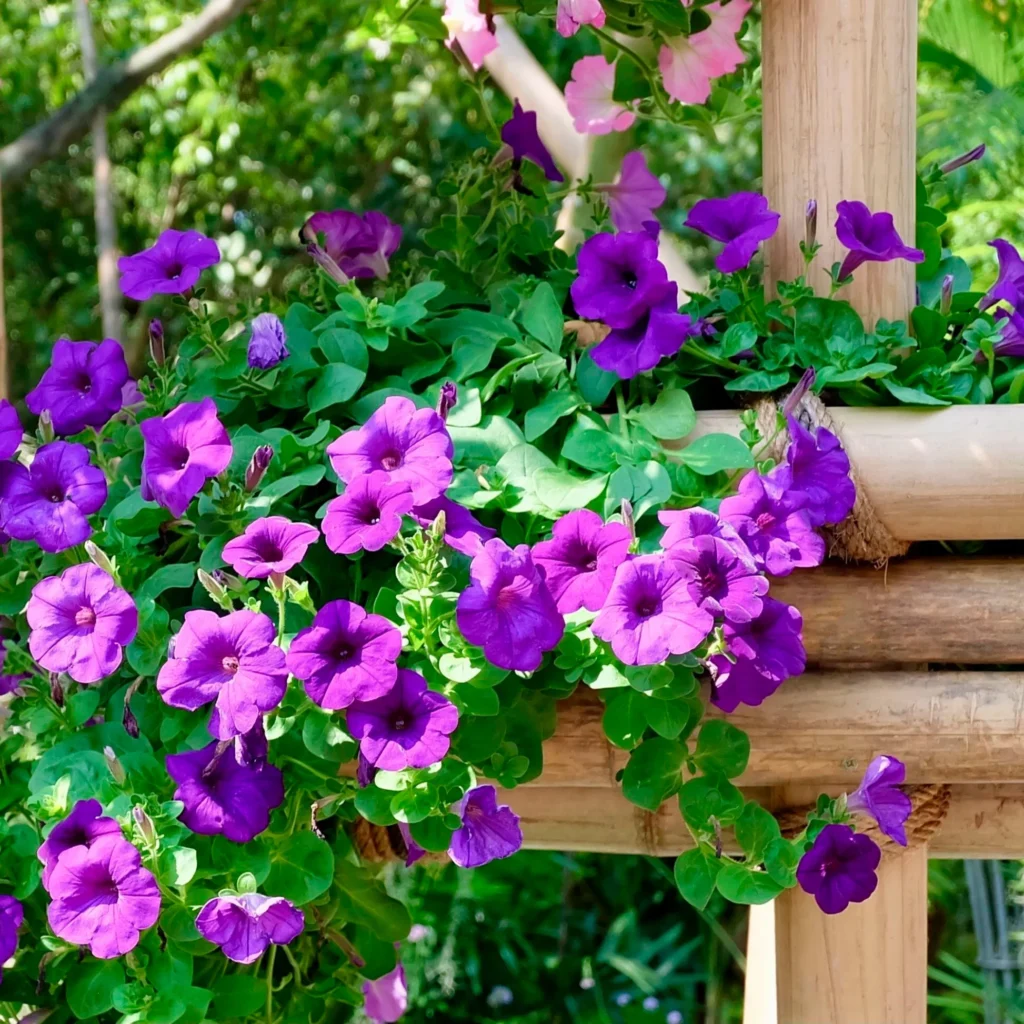
Liquid fertilizers are quickly absorbed by plants and ideal for container-grown or hanging basket petunias.
Simple Recipe
Ingredients:
- 1 cup crushed eggshells
- 1 banana peel
- 1 tablespoon Epsom salt
- 1 gallon water
Steps:
- Chop banana peel and crush eggshells finely.
- Mix all ingredients in a blender with a gallon of water.
- Let it sit for 24 hours for nutrients to infuse.
- Strain and pour the liquid around the base of your petunias.
Tip: Apply every 2–3 weeks for continuous feeding. This liquid fertilizer promotes bright, long-lasting blooms and strong stems.
4. How to Make Granular or Slow-Release Homemade Fertilizer
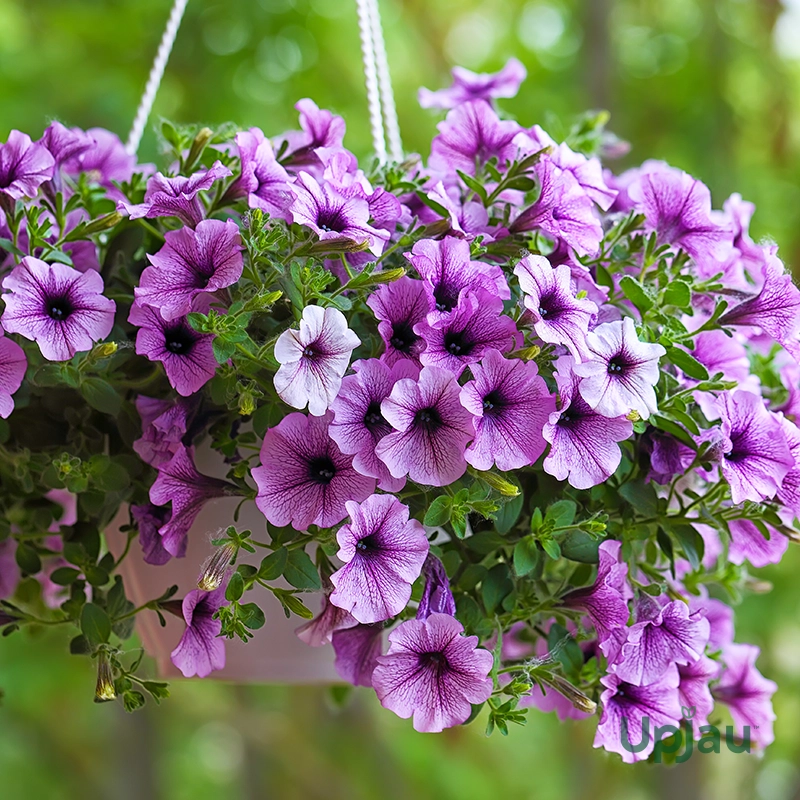
For garden beds or larger planting areas, granular fertilizers provide a slow nutrient release, reducing the frequency of feeding.
Simple Granular Recipe
Ingredients:
- 1 cup crushed eggshells
- 1 cup dry coffee grounds
- 1 cup compost
- Optional: ½ cup crushed dried banana peel
Steps:
- Mix all dry ingredients thoroughly.
- Sprinkle around the base of petunias, about 2 inches away from stems.
- Gently water to help nutrients penetrate the soil.
Tip: Reapply every 4–6 weeks for season-long support. Slow-release fertilizer encourages steady growth and continuous flowering.
5. Soil Preparation and Fertilizer Application
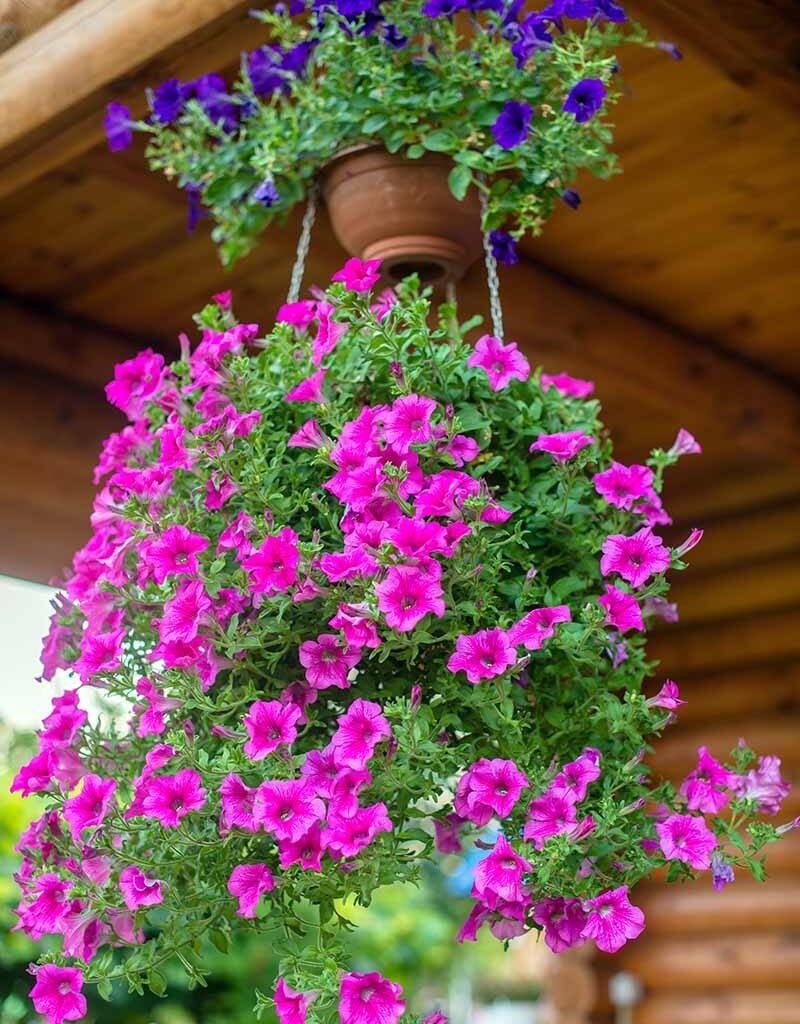
Proper soil preparation enhances fertilizer effectiveness:
- Loosen Soil: Ensure roots have space to grow and access nutrients.
- Add Mulch: Mulching retains moisture and prevents nutrient leaching.
- Apply Fertilizer Correctly: Keep fertilizer slightly away from the crown to prevent root burn.
- Water After Application: Helps nutrients reach roots efficiently.
Tip: Combining fertilizer with mulch ensures long-lasting nutrient availability, maximizing bloom performance.
6. Tips for Continuous Petunia Blooms
Even with the best homemade fertilizer, certain practices ensure your petunias thrive:
- Deadhead Regularly: Remove spent flowers to encourage new blooms.
- Pinch Back Stems: Promotes bushier growth and more flowering sites.
- Monitor Soil Moisture: Petunias prefer moist, well-drained soil. Avoid overwatering to prevent root rot.
- Sunlight: Plant in full sun for at least 6–8 hours per day to maximize flowering.
Tip: Fertilization works best when combined with proper pruning, watering, and sunlight exposure.
7. Avoiding Common Mistakes With Homemade Fertilizer
- Over-fertilization: Too much nitrogen encourages leafy growth over flowers.
- Direct Contact With Stems: Can burn roots and damage plants.
- Ignoring pH: While most petunias prefer slightly acidic to neutral soil, too much acidity can reduce nutrient availability.
- Inconsistent Feeding: Regular feeding is key for long-lasting blooms.
Tip: Keep a fertilizer schedule to maintain consistent nutrient supply.
8. Benefits of Homemade Fertilizer Over Commercial Fertilizers
- Eco-Friendly: Reduces chemical runoff and recycling household waste.
- Cost-Effective: Uses readily available ingredients instead of expensive products.
- Customizable: Nutrient ratios can be adjusted based on soil tests and plant needs.
- Improves Soil Health: Adds organic matter that enhances soil structure and microbial activity.
Tip: Homemade fertilizers nurture both plants and soil, creating a sustainable gardening system.
9. Advanced Tips for Maximum Bloom
- Combine Liquid and Granular Feeding: Use granular fertilizer at planting and supplement with liquid feed throughout the season.
- Companion Planting: Plant petunias alongside herbs like basil or oregano to naturally repel pests, reducing stress on blooms.
- Regular Monitoring: Check leaves for nutrient deficiencies and adjust fertilizer accordingly.
- Rotate Plants: Avoid planting petunias in the same soil year after year to prevent soil depletion.
Tip: Healthy, well-fed petunias are more resilient to heat, pests, and disease, ensuring continuous blooms.
Conclusion
Petunias reward gardeners who provide consistent nutrients, proper care, and attention to detail. Homemade fertilizers, made from everyday ingredients like eggshells, banana peels, coffee grounds, and Epsom salt, provide a balanced nutrient supply that supports vibrant, long-lasting blooms.
By combining homemade fertilizer with deadheading, pinching, proper watering, and sunlight, you can enjoy petunias that bloom nonstop throughout the season. Not only does this approach reduce costs and environmental impact, but it also nurtures soil health and strengthens plant resilience.
Tip: Think of homemade fertilizer as the secret ingredient to your garden’s success—it transforms ordinary petunias into a spectacular, colorful display that lasts from spring through fall.
